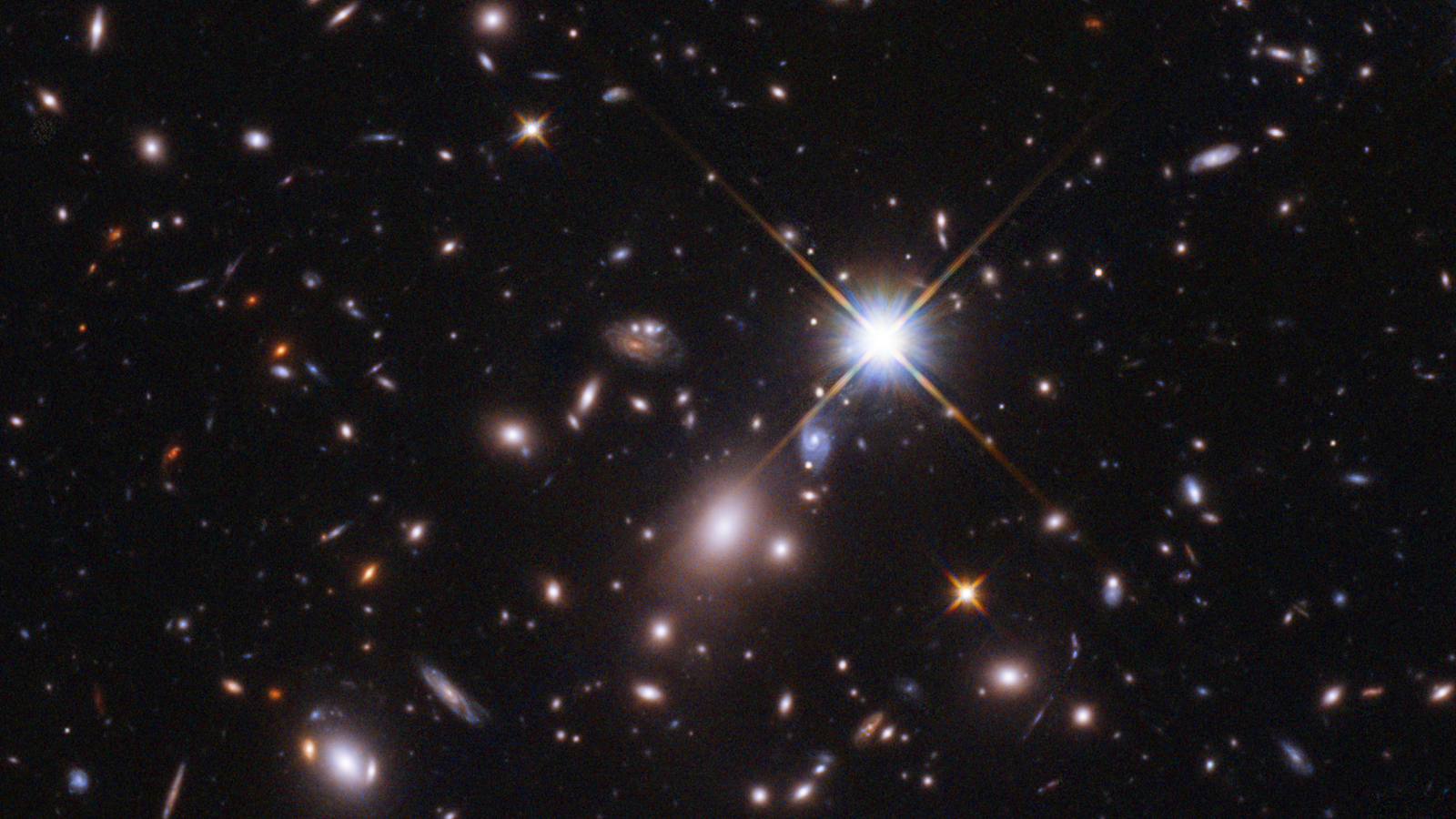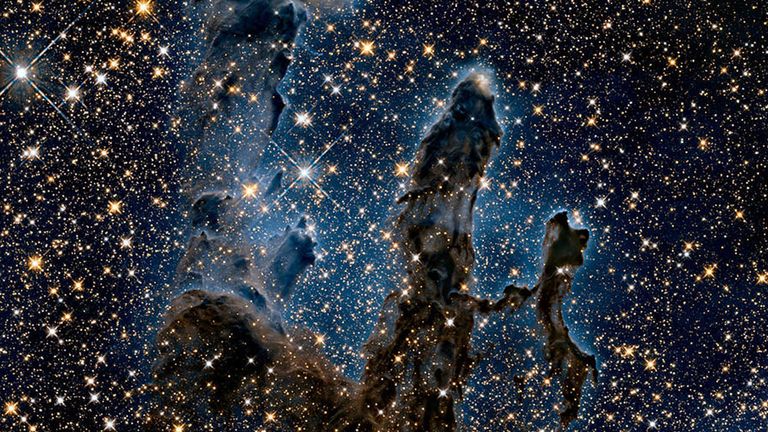Scientists have discovered what may be the most distant star humanity has ever seen.
The star which has been nicknamed Earendel, meaning morning star in Old English, was spotted using the Hubble Space Telescope.
Researchers estimate its light has taken 12.9 billion years to reach Earth, meaning it dates closer to the Big Bang (13.8bn years ago) than the previous record holder star, from nine billion years ago.
Earendel was discovered by an international team of researchers, including scientists from Durham University in the UK, and led by the Space Telescope Science Institute in the US.
It was uncovered using data collected during Hubble’s RELICS (Reionisation Lensing Cluster Survey) programme, and the findings have been published in the journal Nature.
Dr Guillaume Mahler, from Durham University, said: “This might be the earliest star we will ever see since the Big Bang and it was so surprising that it is so much younger than the previous entry of nine billion years, at first I didn’t believe it.
“The discovery of Earendel is fantastic and there will be many other aspects of the star we will be able to study, which could keep us busy for years to come,” Dr Mahler added.
The scientists are hesitant about confirming that Earendel is a single star at the moment, although if it was one it would be at least 50 times the mass of our Sun and millions of times as bright, making it one of the most massive stars known.
How was it found?
Scientists were able to spot it thanks to the natural magnification provided by a huge galaxy cluster sitting between us and the star.
This galaxy is so massive it warps the fabric of space, creating a kind of interstellar magnifying glass that distorts and amplifies the light from objects behind it.
“Gravitational lensing is like observing galaxies under the microscope and with technology such as the Hubble telescope, you start to see what is inside,” Dr Mahler said.
The team at Durham explained: “Thanks to the rare alignment with the magnifying galaxy cluster, the star Earendel appears directly on, or extremely close to, a ripple in the fabric of space.
“This ripple, which is defined in optics as a ‘caustic,’ provides maximum magnification and brightening.
“The effect is analogous to the rippled surface of a swimming pool creating patterns of bright light on the bottom of the pool on a sunny day.
“The ripples on the surface act as lenses and focus sunlight to maximum brightness on the pool floor. This caustic causes the star Earendel to pop out from the general glow of its home galaxy. Its brightness is magnified by a factor of thousands,” they said.
The lead author of the study, Brian Welch, said: “We almost didn’t believe it at first, it was so much farther than the previous most distant star.
“Normally at these distances, entire galaxies look like small smudges. This galaxy has been magnified and distorted by gravitational lensing into a long crescent that we named the ‘Sunrise Arc’.
“Studying Earendel will be a window into an era of the Universe that we are unfamiliar with, but that led to everything we know.
“It’s like we’ve been reading a really interesting book but we started with the second chapter, and now we will have a chance to see how it all got started.”
Astronomers believe that the alignment will last for several times, and Earendel will be observed by NASA’s new James Webb Space Telescope (JWST) which is the most powerful telescope in history and was launched last year.
The JWST is ideal to study Earendel because its sensitivity to infrared light will help examine the light reaching us from the star which has been stretched into infrared wavelengths due to the universe’s expansion.
One of the study’s co-authors, Dan Coe from the Space Telescope Science Institute in Baltimore, added: “With Webb we expect to confirm Earendel is indeed a star, as well as measure its brightness and temperature.
“We also expect to find the Sunrise Arc is lacking in heavy elements that form in subsequent generations of stars. This would suggest Earendel is a rare massive metal-poor star.”
Another co-author, Selma de Mink, who is the scientific director of the Max Planck Institute for Astrophysics, described the find as “kind of like finding an old photograph of your great-grandparents, because these stars are basically our ‘stellar ancestors’.
“We are, after all, made out of the elements that they once produced. Yet we have so many unanswered questions.
“Most exciting for me is that some of the black holes recently detected by gravitational waves are remnants of stars that lived back then. I hope that Earendel and future similar discoveries will help us understand a little more about the origin of these black holes,” added de Mink.



